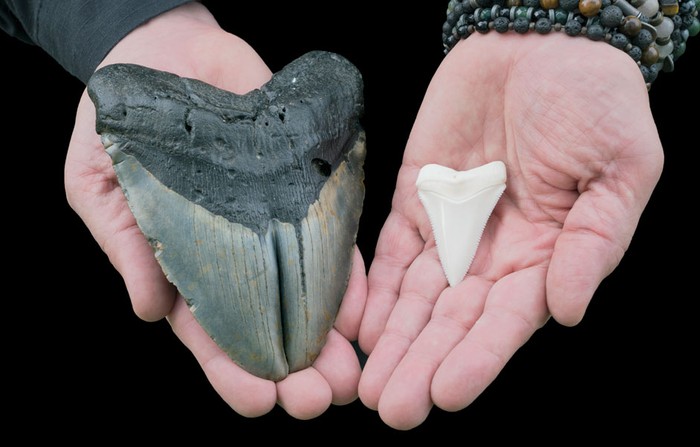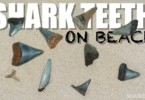When we talk about fossilization regarding sharks, it is different from the fossilization of animals that have non-cartilage bones. Because sharks have cartilage instead of bone, their body is highly susceptible to disintegrating a little while after their death. In this way, the fossils of sharks are not preserved in the traditional sense, with all their bodily structures still preserved in three dimensions.
Anyhow, it does not depict that no part of their bodies becomes fossilized. In fact, shark teeth are very popular fossils that are frequently found on the seaside. This article explicates how to identify shark teeth. Again, there is a misconception that due to the absence of a bony structure, shark teeth are the only parts of their body to fossilize.
Parts of their body, such as the centers of the vertebra, the rostral node of the snout, and jaw cartilage, are often found. Fossil shark complete skeletons, however, are extremely rare.
In addition to the tiny denticles of their skin, coprolites, and often their spines, shark teeth go through an interesting process to become fossils.
Hunting of sharks’ teeth on a beach is no doubt a fun activity for visitors of all ages. Sharks possess multiple rows of teeth embedded in the movable jaws. Each species of shark have a unique set of teeth that are adapted for crushing, tearing, and biting the prey. These unique sets of teeth are called denticles. Sharks lose a lot of teeth throughout their life span which is why one can easily collect them from the beaches. How will you identify the tooth of sharks if accidentally find them?
For your ease, we are sharing some useful tips so that you can recognize the shark’s tooth easily. Read on.
How Many Teeth Do Sharks Have?
Is it believed that throughout their lifetime, sharks have more than 50,000 teeth that they shed continuously while feeding? Teeth in the front row fall off and the teeth from the back row move forward to fill the vacant spaces. Interestingly, only 300 to 350 teeth are functional at one time.
How to Identify a Shark Tooth?
As sharks have so many teeth so it is quite difficult to predict the species of sharks based on teeth only, but you can find them anywhere on the beach. Researchers and fishermen identify teeth based on shape and features – sharks that feed on crabs, mollusks, squids, lobsters, and shellfish have seen sharp teeth whereas the species which just catch the prey and swallow it, possess spear-like teeth.
Here are some tips to find and identify the teeth of sharks:
1: Whenever visit a beach, keep your eyes on the shoreline to look for teeth.
2: Scan the sand if you cannot find the teeth or look for them where they are a lot of debris and shell on the beach.
3: The key feature of shark teeth is that it is dark in color and triangular in shape.
4: Normally the size of teeth lies between 0.5 to 2 inches.
5: Shark teeth are sometimes misunderstood with the seashell. If you cannot distinguish between the two – hold the object in sunlight. The glossy and shimmery appearance indicates that it’s shark teeth.
Have you found it? Lucky you.
Can we Identify the Species of Shark by Teeth?
Yes. It is possible to know the species of sharks by analyzing the teeth. All teeth look similar in their physical appearance but there are a few distinctive features that will help you to identify the species by its teeth.
Some of the features of the most common species of shark’s teeth are given below:
Great White Sharks: The teeth of White sharks are very thin, serrated, and have thin and fragile roots which is why the roots are mostly broken while falling off.
Tiger Sharks: The teeth are large with complex serration, and thick and robust roots.
Bull Sharks: They have narrow, broad, and flat teeth with serration. The teeth are small in size about 1 inch long.
Shortfin Mako Sharks: Mako sharks have small teeth with a long crown, small cusps, and pointed and deep roots.
Great Hammerhead Shark: The sharks have serrated teeth with square-shaped roots, and angled blades with small cusps.
Conclusion
Sharks throughout their life, continue to produce new teeth and shed old teeth which is why there are several teeth a shark lover can collect from the beaches. For identification, the color and the shape of teeth are the two distinctive features. Moreover, the tooth anatomical feature will help you to depict the species of sharks as well.







